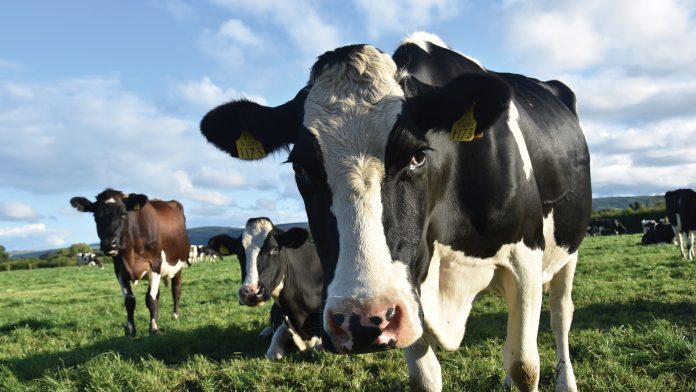Guava is a profitable crop in India. If grown with proper care and latest technology, Guava will produce higher income. Therefore, below is the complete information related to guava cultivation. So read this blog till the end to learn about the entire process of Guava production.
Climate Suitable For Guava Cultivation
Guava has adapted so well to the Indian climate that it can be cultivated successfully in any part of India. Due to its more tolerant plant, it can be produced quickly in any soil and climate. The Guava plant is of tropical climate. That’s why it is cultivated in most arid and semi-arid climate areas. Guava plants tolerate both cold and hot climates easily. But the frost falling in the winter season damages its small plants. Its plants can handle a maximum temperature of 30 degrees and a minimum of 15 degrees, and a fully grown plant can tolerate temperatures up to 44 degrees.
Selection Of Land For Cultivation
You have already been told above that the guava plant is a plant of tropical climate. According to the Indian environment, it can be successfully cultivated in any soil, from light to heavy and with poor drainage. But for its good commercial farming, sandy loam to the soft ground is considered most suitable. In alkaline soil, plants are prone to wilt disease. Therefore, in Guava cultivation, the pH value of the land should be between 6 to 6.5. To get a good yield, use only this type of soil field. Guava cultivation can be done in both hot and dry climates. It can be successfully cultivated in areas with 100 to 200 cm of rainfall in a year.
Sowing Process Of Guava Seeds
For guava cultivation, the sowing of seeds is correct in February to March or August to September. Guava plants are propagated by both seed and seedling methods. Moreover, farmers can use the Mahindra Tractor for planting. Apart from sowing seeds in the field, early yields can be obtained by transplanting seedlings. If planting saplings in a guava field, keep a distance of 6 x 5 metres while planting it. If the plant is grown moderately, keep its space at 15 to 20 feet—plant 25 cm. Planting at this depth will give the plant and its branches an excellent place to spread. About 132 plants can be grown in one acre of guava farmland. Apart from this, if its cultivation is done through seeds, the distance will be according to the seedlings, and the seeds should be sown at standard depth.
Use Of Manure And Fertilizer
Prepare pits with the help of a Swaraj Tractor, keeping a distance of 5 to 6 metres before transplanting the guava plant. After preparing the hole:
- Add 200 to 300 grams of rotten cow dung manure before transplanting the plant.
- Along with this, use neem in it, and along with it, you should use a proper amount of chemical fertilizers like Urea and potash.
- When the guava plant is 1 to 3 years old, apply 10 to 25 kg of FYM, 155 to 200 grams of Urea, 500 to 1600 grams of Single Super Phosphate and 100 to 400 grams of Muriate of Potash per plant.
Moreover, when the plant is 4 to 6 years old, 25 to 40 kg of FYM (Manure), 300 to 600 grams of Urea, 1 to 2 kg of Single Super Phosphate, 600 to 800 grams of Muriate of Potash should be added per plant. A full dose of farmyard manure and half dose of Urea, Muriate of Potash and Single Super Phosphate should be given from May month to June and again from September to October.
Pruning
Pruning and pruning are necessary for guava plants’ strong and healthy growth. It makes the stems of its plant strong. The stronger the stem, the higher the yield and full of good quality. Light pruning of the plant is necessary after the first harvest of fruits to maintain the plant’s productive capacity. Pruning of dried and diseased branches should be done from time to time. This helps in the germination of new shoots after harvesting.
Irrigation Of Plants
Guava is in a dry climate, so its crop requires less irrigation. Do its first irrigation immediately after transplanting the plant and second irrigation after 3 to 5 days. After that, rinse from time to time, considering the need for irrigation according to weather and soil moisture. For example, if you want to obtain a crop in the winter, you must water its plants 3 to 4 times in the summer. On the other hand, its plants need only 2 irrigations in the winter, and its plants have to be watered only 2 to 3 times in the rainy season.
Weed Control
Initially, guava plants require more care. Therefore, its first weeding should be done 25 to 30 days after transplanting the plants. After this, when weeds appear in the field, do hoeing at an interval of 10 to 15 days. Gramoxone 6ml for weed control Spray by adding it per litre of water. Spray Glyphosate at 1.6 Ltr in 200 Ltr of water after weed germination (before weeds flower and reach 15 to 20 cm height) per acre. When the guava tree grows, ploughing should be done between the trees. Because of this, weeds do not take birth in the field.
Guava Cultivation Harvesting
After two to three years of transplanting the guava plant, the plant starts bearing fruits. Harvest the fruits after full ripening. Its fully developed plant yields two to three times in a year. When the colour of the fruits on its plants starts appearing pale yellow, during that time they should be harvested. After harvesting, clean the fruits, separate them on the basis of size and pack them. It should be sent to the market immediately after harvesting. Cartoon fibre boxes or cardboard boxes of different sizes or bamboo baskets should be used for packing it.
Stay tuned with us to learn more about profitable fruit farming.





